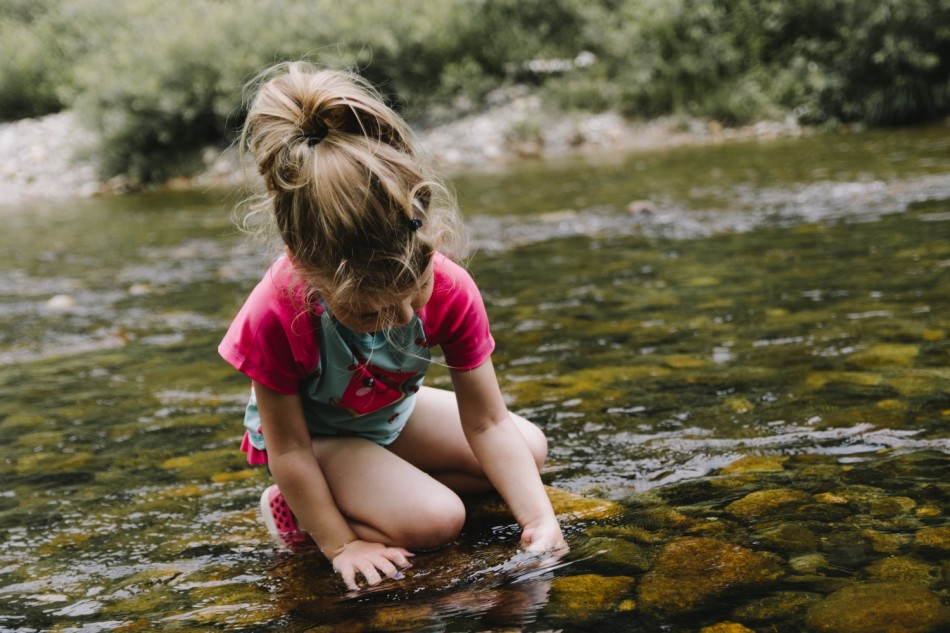Outdoor Education: How To Utilize Nature To Get Your Kids Interested in Math and Science

Nurturing a love for math and science is crucial to preparing children for a promising future. This echoes a forecast that the STEM job market will expand by 8.8 percent by 2028. By harnessing the captivating wonders of nature, parents and educators can keep children aligned with this projection as they foster a deep appreciation for these subjects.
The opportunities are endless, from nature-based experiments and outdoor explorations to integrating math and science into art and storytelling. Embracing the beauty of nature's classroom makes learning fun and empowers children to understand the practical applications of math and science in the world around them.
Nature is a great place to start if you're a parent seeking practical techniques to spark your kids' fascination for math and science.
Why Use Nature To Instill a Love of Math and Science in Kids
Using nature to ignite children's interest in math and science is a powerful approach. It enhances their academic knowledge and nurtures a deep love of the natural world while instilling valuable life skills. Here are some key advantages nature offers as an educator:
Real-world relevance
Nature provides a tangible and relatable context for learning math and science, making abstract concepts more understandable and applicable to everyday life.
Hands-on learning
Engaging with nature allows children to interact directly with their environment, promoting experiential learning and enhancing their understanding of scientific principles.
Questions and wonder
Amazing nature naturally captivates children's imaginations, increasing their desire to ask questions, explore, understand, and learn more about the world around them. Based on the attention restoration theory, fascination is the key factor behind the positive impact of nature on learners' cognition.
Holistic learning
Integrating math and science with nature-based activities encourages a multidisciplinary approach, promoting a deeper understanding of the interconnectedness of various subjects.
Emotional associations
Nature elicits emotional responses in children, creating positive associations with math and science, which can lead to a lasting interest in and passion for these subjects.
Environmental quotient (EQ)
Nature-based learning helps kids develop love and accountability for the planet, allowing them to mature into responsible caretakers.
Enhanced observation skills
Examining nature calls for keen observation. It helps develop young minds' ability to catch meaningful details and patterns, a vital math and science skill. In this aspect, nature can be particularly beneficial to learners with Attention Deficit Hyperactivity Disorder (ADHD) because it helps reduce their symptoms and improve their ability to focus on new knowledge.
Critical thinking and problem-solving
Encounters with real-life natural phenomena challenge children to think critically and use their knowledge to solve problems, promoting analytical thinking.
Physical activity and health benefits
Nature-based learning often involves outdoor activities, encouraging physical exercise, and promoting overall well-being.
Long-lasting impact
The positive experiences children gain from exploring math and science in nature can leave a lasting impression, influencing their academic and career choices in the future.
Tips for Engaging Children in Math and Science Through Nature
Creativity goes a long way toward encouraging a love of math and science in children. Here are some of the most engaging ways kids can appreciate math and science through outdoor education:
Nature-based experiments and adventures
Organize nature-based experiments that involve observation, measurement, and data collection. For instance, studying the growth patterns of plants, tracking animal behavior, or analyzing rock formations can introduce scientific principles in a hands-on manner.
Calculating the height of a tree using trigonometry, measuring the velocity of a stream using physics, or observing the Fibonacci sequence in flowers showcases the practical relevance of math and science in nature.
Natural integration of art and math
The mathematical roots of art are undeniable. The great artist Leonardo Da Vinci's Vitruvian Man, a famous sketch displaying the proportions of the male human body, represents the Renaissance period's obsession with artistic math. Da Vinci himself is called a "polymath," a person who uses multi-field drawings to solve problems.
Similarly, teaching children about the relationship between nature art and math involves exploring the patterns, symmetry, and shapes found in the natural world. Encourage them to observe the intricate designs in leaves, flowers, and seashells, then create art inspired by these patterns. Introduce concepts like symmetry by folding leaves or petals and discussing their balanced structures.
By integrating math into their creative process, children gain a deeper understanding of mathematical principles while appreciating the beauty and harmony of nature's artistic expressions.
Math and science in nature stories
By immersing young minds in the adventures of characters exploring nature, they develop an emotional oneness with math and science concepts. As children envision themselves measuring leaves, observing animal behavior, or exploring the night sky, they perceive these subjects as exciting adventures, not just academic disciplines.
Stories about nature enable kids to understand the real-world relevance of math and science in their surroundings. As a result, they develop high respect for these subjects and a continuing passion for new knowledge.
Garden projects and agricultural learning
Gardening projects provide a rich opportunity to introduce children to the fundamental principles of biology, ecology, and agricultural sciences. Children can learn about plant life cycles, photosynthesis, and ecosystems while actively participating in planting, nurturing, and harvesting.
Moreover, incorporating math into gardening, such as calculating plant spacing or measuring growth, reinforces the importance of these skills in real-life scenarios.
Geology explorations
Introduce kids to concepts like measurement by calculating the size and weight of rocks and minerals they discover. Encourage observation and critical thinking skills as they identify different rock formations and geological features.
Let the children explore the properties of minerals, such as hardness and color, to delve into scientific classification and identification. Additionally, understanding the geological processes behind the formation of mountains, valleys, and canyons introduces kids to the forces of nature and the principles of Earth sciences.
Stargazing and astronomy nights
The night sky has always fascinated humanity, and it continues to be a source of wonder for children today. Organize stargazing nights to observe constellations, planets, and celestial events. Explain the mathematical principles behind orbits, planetary motion, and moon phases.
Understanding the link between math and astronomy in a real-world context encourages children to explore deeper into the mysteries of the universe.
Nature-inspired math games
The connection between nature and game-based math education is proven by science. Games encourage learning by allowing students to solve problems in the context of play, which forms part of the affective or emotional domain of education.
Combined with the affective benefits of nature exposure, nature-inspired math games can be overwhelmingly effective in enticing children to learn the subject. Here are some examples of such games for children:
-
Leaf counting. During a nature walk, challenge children to collect different types of leaves. Back home, let them sort and group the leaves, then count how many are in each group. This activity reinforces counting, sorting, and basic addition skills.
-
Nature tally charts. Have the children create a tally chart to record the number of various items found in nature, such as birds, insects, or flowers. Observing and recording data using tally marks helps them practice counting and data organization.
-
Nature bingo. Design bingo cards with pictures of different elements from nature, like pinecones or rocks, and let the kids mark off the items they find while exploring outdoors. This game hones their skills in observing and recognizing patterns.
-
Math in nature scavenger hunt. Hide various geometric shapes, such as circles and squares, in the outdoor area and let the kids hunt for them while identifying them. This activity teaches them how to recognize geometric figures in the environment.
-
Measurement with natural objects. Using natural objects like twigs or stones, teach the kids measurement concepts-for example, by determining which of two twigs is longer or shorter.
Use the Power of Nature in Educating Children

In the small town of Glengarry, Australia, an independent school called The Scots College offers a unique, six-month outdoor learning program for 14 to 15-year-old boys. A study on the program established that outdoor education boosted the participants' academic engagement and 21st-century skills, such as communication and critical thinking. Interestingly, it also revealed a drop in students' motivation within the first seven months of returning to regular school.
These findings further substantiate the belief that nature can be a great teacher, both in practical life and academics, especially in math and science.
Indeed, when children grow up to love math and science, they often have more opportunities to blossom in their educational and personal development. While traditional classroom settings offer valuable knowledge, engaging kids through nature education sets them up for a life lived with a natural thirst for learning.
© 2024 ParentHerald.com All rights reserved. Do not reproduce without permission.
* This is a contributed article and this content does not necessarily represent the views of parentherald.com
